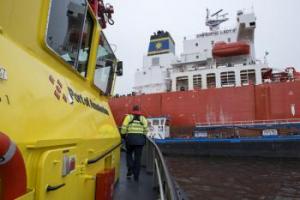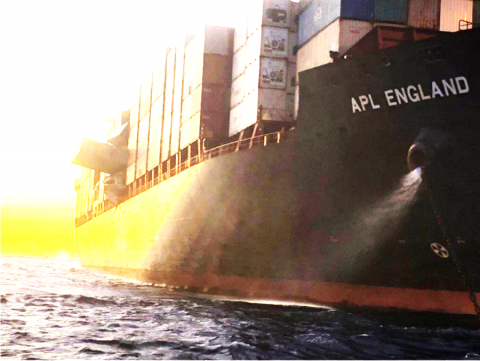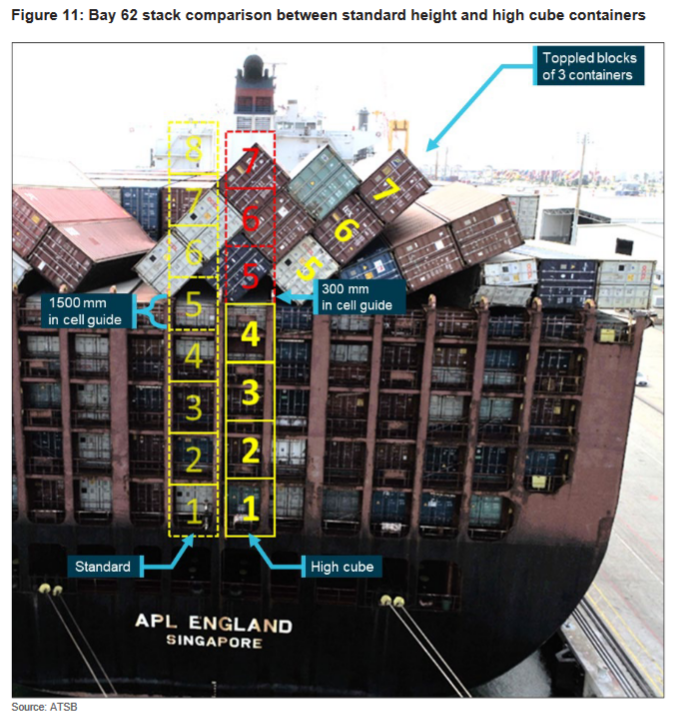Harbour Master
Harbour Masters
Worldwide there are approximately 3,000 merchant ports and the work of the Harbour Master can vary widely from country to country and from port to port even within the same country.


On 24 May 2020, APL England was making way down the east coast of New South Wales, with a cargo of containers, bound for Melbourne, Victoria. Early that morning, in adverse weather, the ship underwent a series of heavy rolls that resulted in the loss of 50 containers overboard and shutdown of the main engine.

What the ATSB found
The Australian Transport Safety Board (ATSB) found that APL England’s fixed container securing arrangements on deck were in a poor state of repair and the strength of many securing fixtures was severely reduced by corrosion. In the seas encountered, the fittings failed, and containers were lost overboard. The investigation also found that this condition would have taken several years of poor maintenance to develop. This showed that the ship had not received the scrutiny from crew members, shore management or other agencies that a ship of its age or condition required. This presented an increased risk to the continued safe operation of the vessel, security of the cargo carried, and safety of crew members working around the containers.
In addition, the investigation found that procedures for adverse weather were not followed. Had these procedures and associated assessment tools been used, navigational and operational decisions could have been made, which would have better prepared the ship for the conditions encountered.
What has been done as a result
In addition to the repairs conducted on APL England, the ATSB has been advised that the deck and container fittings in all other vessels in the APL fleet were inspected and repaired as required. The company also implemented improved vessel inspections and associated reporting requirements for both ship and shore staff. APL assessed the safe stowage and carriage of high cube containers and conducted an internal safety assessment of the practice. As a result, limits were placed on the numbers of high cube containers that could be loaded into bays fitted with cell guides, which limited the extent to which containers protruded above the cell guides. Cargo securing manuals were reviewed and updated to include the revised stowage arrangements for high cube containers.
Additionally, APL implemented additional safety action regarding passage planning and navigation in heavy weather. They also advised that the wider CMA CGM Group and subsidiary entity fleets were made aware of these issues and the safety actions taken in response to this investigation.
Finally, in July 2022 the classification society, DNV, updated Class Guideline DNV-CG-0182 to include a new section which provided requirements and guidance on the allowable wear and tear of container supporting structures and
container securing equipment.
Safety message
ATSB’s investigation highlights the importance of regular maintenance of vessel fixtures to ensure the security and stability of the ship and its cargo, as well as crew safety.
Ships’ officers and crew are also reminded of the importance of adhering to the cargo securing manual and of following specific procedures and guidance material to assist preparations for, and decision making during, adverse weather conditions.
The investigation report
The 46-page ATSB document: Loss of containers overboard from APL England
46 NM south-east of Sydney, New South Wales on 24 May 2020 is available here:
https://www.atsb.gov.au/sites/default/files/2022-12/MO-2020-002-Final_0.pdf
Editor’s note
The material published here is issued from the source: The Australian Transport Safety Bureau, and is reproduced here with grateful thanks.
Illustrations reproduced by kind permission of the Australian Transport Safety Bureau.
ATSB ©.
The International Harbour Masters Association (IHMA) and the Port of Rotterdam Authority are pleased to announce the 15th International Harbour Masters Association Congress, to be held from 09–12 June 2026 at Theater Zuidplein in Rotterdam.
Naresh Sewnath, Senior Harbour Master at Transnet National Ports Authority (TNPA) in South Africa’s Port of Durban, began his maritime career back in 1988. He started out as a cadet with TNPA (then known as South African Transport Services (SATS).